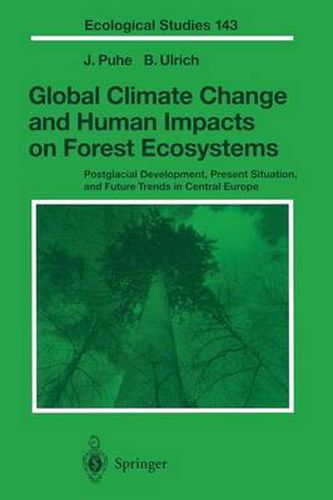Readings Newsletter
Become a Readings Member to make your shopping experience even easier.
Sign in or sign up for free!
You’re not far away from qualifying for FREE standard shipping within Australia
You’ve qualified for FREE standard shipping within Australia
The cart is loading…






This title is printed to order. This book may have been self-published. If so, we cannot guarantee the quality of the content. In the main most books will have gone through the editing process however some may not. We therefore suggest that you be aware of this before ordering this book. If in doubt check either the author or publisher’s details as we are unable to accept any returns unless they are faulty. Please contact us if you have any questions.
The inclusion of forests as potential biological sinks in the Kyoto Protocol to the United Nations Framework Convention on Climate Change (UNFCCC) in 1997 has attracted international attention and again has put scientific and political focus on the world’s forests, regarding their state and development. The international discus sion induced by the Kyoto Protocol has clearly shown that not only the tropical rain forests are endangered by man’s activities, but also that the forest ecosystems of boreal, temperate, mediterranean and subtropical regions have been drastically modified. Deforestation on a large scale, burning, over-exploitation, and the degra dation of the biological diversity are well-known symptoms in forests all over the world. This negative development happens in spite of the already existing knowledge of the benefits of forests on global energy and water regimes, the biogeochemical cycling of carbon and other elements as well as on the biological and cultural diversity. The reasons why man does not take care of forests properly are manifold and complex and there is no easy solution how to change the existing negative trends. One reason that makes it so difficult to assess the impacts of human activity on the future development of forests is the large time scale in which forests react, ranging from decades to centuries.
$9.00 standard shipping within Australia
FREE standard shipping within Australia for orders over $100.00
Express & International shipping calculated at checkout
This title is printed to order. This book may have been self-published. If so, we cannot guarantee the quality of the content. In the main most books will have gone through the editing process however some may not. We therefore suggest that you be aware of this before ordering this book. If in doubt check either the author or publisher’s details as we are unable to accept any returns unless they are faulty. Please contact us if you have any questions.
The inclusion of forests as potential biological sinks in the Kyoto Protocol to the United Nations Framework Convention on Climate Change (UNFCCC) in 1997 has attracted international attention and again has put scientific and political focus on the world’s forests, regarding their state and development. The international discus sion induced by the Kyoto Protocol has clearly shown that not only the tropical rain forests are endangered by man’s activities, but also that the forest ecosystems of boreal, temperate, mediterranean and subtropical regions have been drastically modified. Deforestation on a large scale, burning, over-exploitation, and the degra dation of the biological diversity are well-known symptoms in forests all over the world. This negative development happens in spite of the already existing knowledge of the benefits of forests on global energy and water regimes, the biogeochemical cycling of carbon and other elements as well as on the biological and cultural diversity. The reasons why man does not take care of forests properly are manifold and complex and there is no easy solution how to change the existing negative trends. One reason that makes it so difficult to assess the impacts of human activity on the future development of forests is the large time scale in which forests react, ranging from decades to centuries.